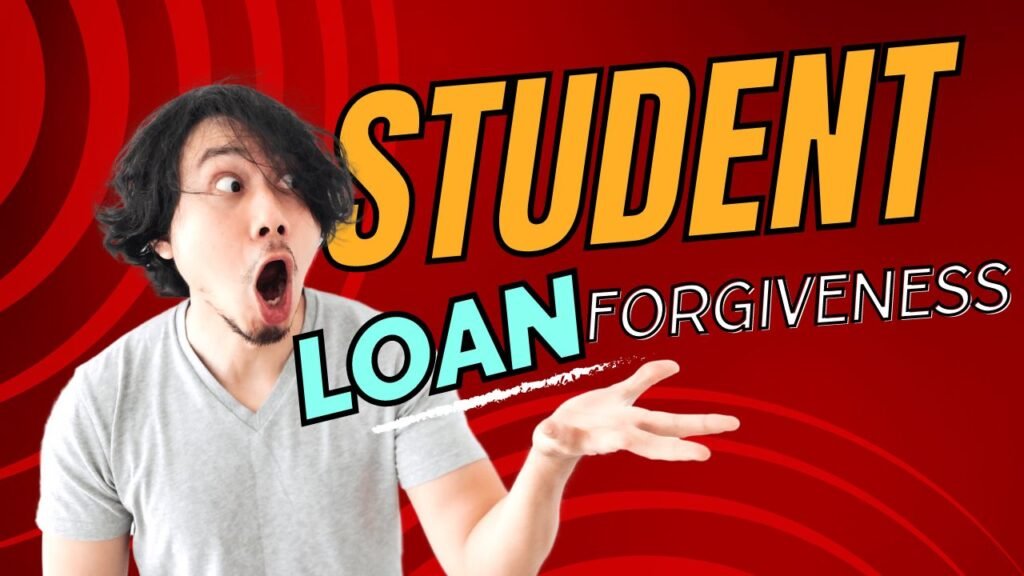Student loan forgiveness is a program to help borrowers reduce or eliminate their outstanding debt. This initiative is crucial as it financially relieves millions of Americans burdened by educational loans.

Loan forgiveness can be a life-changing opportunity for many, helping them achieve financial stability and freedom.
What’s New in 2024
The 2024 student loan forgiveness application process brings several new changes and updates. With evolving policies and economic conditions, it’s essential to stay informed about these updates to maximize your chances of qualifying for forgiveness.
This guide will walk you through everything you need to know about the 2024 application process.
Table of Contents
Eligibility Criteria
Who Qualifies?
Eligibility for student loan forgiveness in 2024 depends on several factors. Generally, borrowers who work in specific public service jobs or who have made consistent payments under income-driven repayment plans for a certain number of years may qualify. Key criteria include:
- Employment in qualifying public service positions (e.g., government jobs, nonprofit organizations, teaching, and healthcare).
- Enrollment in a qualifying repayment plan.
- Making a specified number of qualifying payments (typically 120 for Public Service Loan Forgiveness).
Types of Loans Covered
Not all student loans are eligible for forgiveness. The following loan types generally qualify:
| Loan Type | Description |
|---|---|
| Direct Subsidized and Unsubsidized Loans | Loans are available to graduate or professional students and parents of dependent undergraduates. |
| Direct PLUS Loans | Consolidation of multiple federal loans into one loan. |
| Direct Consolidation Loans | A consolidation of multiple federal loans into one loan. |
It’s important to note that private loans are not eligible for federal loan forgiveness programs.
Income and Employment Requirements
Income-driven repayment plans are crucial for many forgiveness programs. These plans cap your monthly payments based on your income and family size.
For Public Service Loan Forgiveness (PSLF), you must be employed full-time by a qualifying employer. Specific income thresholds and employment requirements may vary depending on the forgiveness program you are applying for.
Student Loan Forgiveness Application Process
Applying for student loan forgiveness can be a complex process, but following these steps can simplify it:
- Determine Your Eligibility: Review the eligibility criteria to ensure you qualify for the forgiveness program.
- Choose the Right Repayment Plan: Enroll in a qualifying income-driven repayment plan if you haven’t already.
- Verify Employment: Obtain certification from your employer to verify your employment in a qualifying public service job.
- Make Qualifying Payments: Ensure that you make the required number of qualifying payments.
- Submit the Application: Complete and submit the forgiveness application through the appropriate channels.
Required Documentation
Gathering the necessary documentation is crucial for a successful application. You will typically need:
| Documentation | Purpose |
|---|---|
| Employment Certification Forms | Verify employment in a qualifying job |
| Proof of Income and Family Size | Necessary for income-driven repayment plans |
| Payment History for Student Loans | Demonstrates qualifying payments |
| Identification Documents | Confirms your identity (e.g., government-issued ID) |
Important Deadlines
Mark these key dates and deadlines in your calendar to stay on track:
| Date | Event |
|---|---|
| January 1, 2024 | Application Opening Date |
| December 31, 2024 | Application Deadline |
| Same as Application Deadline | Documentation Submission Deadline (check specific program requirements) |
Tips for a Successful Application
Common Mistakes to Avoid
Avoid these common mistakes to increase your chances of a successful application:
- Incomplete Documentation: Ensure all required documents are complete and submitted.
- Inaccurate Information: Double-check your application for any errors or inconsistencies.
- Missed Deadlines: Submit your application and all required documents before the deadlines.
Best Practices
Follow these best practices for a smoother application process:
- Stay Organized: Keep all your documents and information organized.
- Regularly Verify Employment: Consistently verify your employment status with your employer.
- Stay Informed: Keep up with any changes or updates to the forgiveness program.
Resources and Support
Utilize these resources for additional help and support:
- Federal Student Aid Website: Official information and resources from the U.S. Department of Education.
- Loan Servicers: Contact your loan servicer for personalized assistance.
- Financial Advisors: Seek advice from financial advisors who specialize in student loans.
FAQs
Frequently Asked Questions
Here are answers to some common questions about the student loan forgiveness application process:
Can I apply for more than one forgiveness program?
Yes, but you can only receive forgiveness from one program at a time.
What happens if I change jobs?
If you switch to a non-qualifying job, you may lose your eligibility for certain forgiveness programs.
Are forgiven amounts taxable?
As of 2024, most federal loan forgiveness amounts are not considered taxable income, but it’s essential to verify current tax laws.
Conclusion
Navigating the student loan forgiveness application in 2024 can be challenging, but with the right information and preparation, it’s achievable.
By understanding the eligibility criteria, following the application process diligently, and avoiding common mistakes, you can increase your chances of receiving loan forgiveness.
Call to Action
If you meet the eligibility criteria, don’t hesitate to apply for student loan forgiveness. Take advantage of available resources and support to guide you through the process. Financial relief is within reach, and starting your application today is the first step toward a debt-free future.
Additional Resources
Helpful Links
